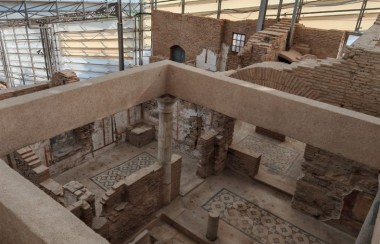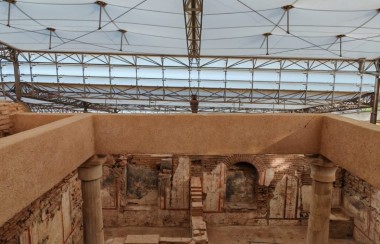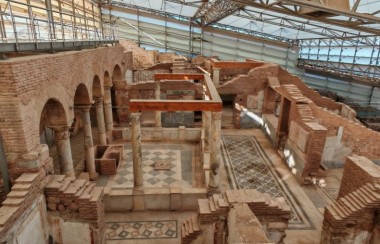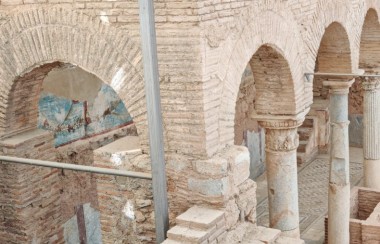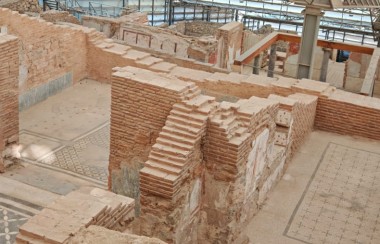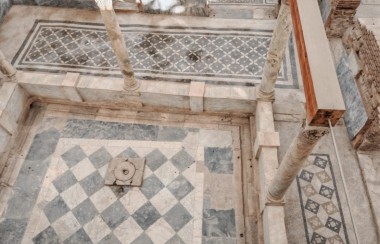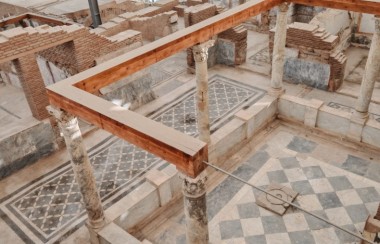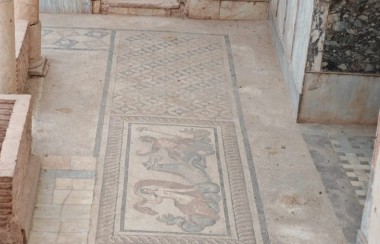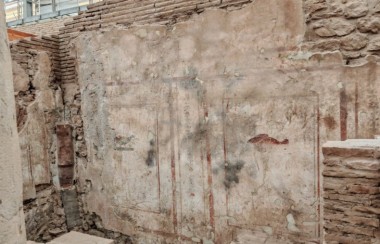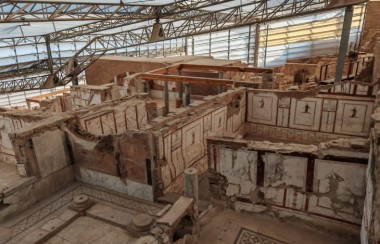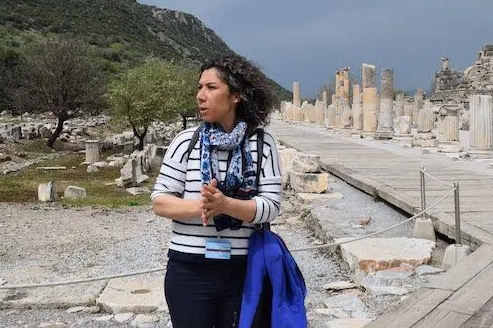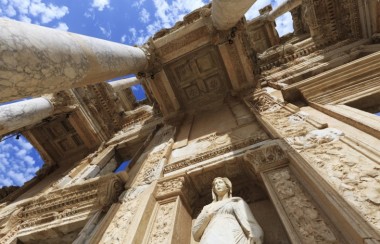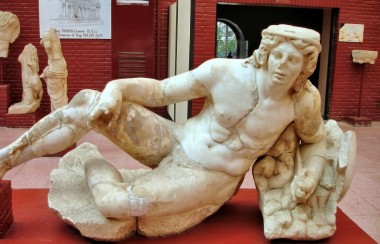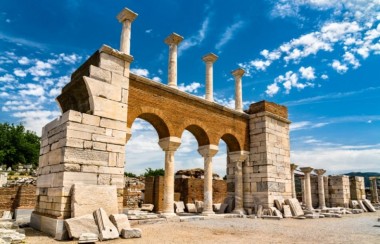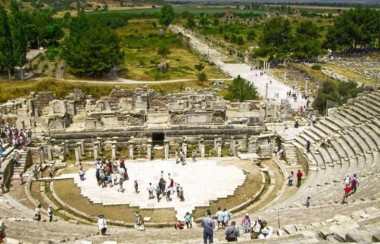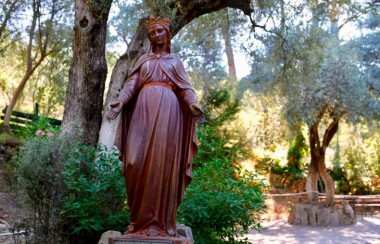The Terrace Houses complex in Ephesus consists of luxurious residential villas, located on the northern slope of Bülbüldağı Hill, next to Curetes Street and opposite the Temple of Hadrian. So far, two housing complexes - Eastern and Western - have been excavated. They were built according to the Hippodamian plan where the roads transect each other at right angles. The excavation work of the Terrace Houses started in 1960. The restoration of the houses is an ongoing process and every year there is something new to admire there.
In the classical period (from the 6th to the 4th century BC), the area was used as a graveyard. Three terraces were established around 200 BC on the slope of the latter Terrace Houses, by using massive stone walls. On the northernmost terrace, a representative dwelling house was already built in the 1st century BS, whereas on the other ones a handicraft quarter developed. In the course of the erection of the Roman Dwelling Units, the Hellenistic constructions were demolished and leveled.
Several wall paintings of the Terrace Houses feature drawings and graffiti which offer an insight into the everyday life of the inhabitants. The drawings mainly show gladiators, caricatures, and animals. The graffiti include names of persons, poems, and the declarations of love. Especially interesting is a group of 30 lists referring to goods and necessities of everyday life, including their prices (e.g. onions - 3 asses, caraway - 1/2 ass, entrance the thermal baths - 12 asses).
The Eastern Complex, occupying an area of about 2500 square meters, consists of private houses, built on three terraces. The most prominent building is called a domus that is a villa inhabited by wealthy individuals and several houses belonging to the middle-class citizens. The beginning of the complex dates back to the first century AD, and the houses were inhabited until the 7th century AD. Of course, in the meantime, they underwent extensive repairs and reconstructions. Each of the houses had a separate entrance from the street and was equipped with running water.
The domus was a two-storeyed house that belonged to a wealthy family. It is situated on the second terrace. Several rooms of this house have been preserved, including a courtyard, a hall, a dining room, and a private basilica. The courtyard (peristyle), surrounded by Ionic colonnades, was built at the beginning of the 1st century AD. It was restored after the 37 AD earthquake and modified around 300 AD when colored marble revetments and a fountain in the southern part of the peristyle were added. The hall (oikos) contains a niche with a fountain covered with colored marble plates. The room to the south of the hall has been identified as a private basilica.
The Western Complex consisted of at least five luxury villas with peristyles or inner courtyards, perfectly preserved to our times. Many of the rooms are still decorated with frescoes and works of art, discovered during archaeological works. Also in this section, all the houses had running water, and the traces of bathrooms equipped with bathtubs have been found.
This complex comprises the largest collection of ancient mosaic floors from the Roman period in Western Turkey. Most of the mosaics, dating from the beginning of the 1st century to the first half of the 3rd century AD, feature geometric patterns using small black and white stones - a clear link with mosaics from Italy. Few multicolored and figurative mosaics depict Triton, Nereids, Dionysos, Medusa, and a lion.
One of the largest villas of the Western Complex was a two-storey peristyle house, built in the 1st century AD, and altered in the 2nd century AD. There were 12 rooms on its ground floor, and the total habitable space was 900 square meters. Among the preserved rooms, there is a vestibule, a hall, a kitchen, and a bathroom with a bathtub. In the area of this villa, you can see ornamental floor mosaics and beautiful wall frescoes, depicting Herakles, Ariadne, Eros, a peacock, and floral motives.
The second villa of this complex was also built in the 1st century AD. The most interesting elements of this building are its frescoes, depicting two Eros figures and representations of birds, as well as a mosaic with Nereide. This villa was also decorated with a glass mosaic that adorned the vaulting of a niche. This unique mosaic was found shattered on the ground, and has been carefully restored.
A peristyle house in this part of the Terrace Houses area boasts the frescoes that represent Apollo and the Muses, dated to around 450 AD. In another house, in the north-eastern corner of the complex, a fresco depicting the seated Socrates was found in excellent condition. It is now on display in the Ephesus Museum in Selçuk.
Currently, reconstruction works continue in the villas. This fact allows the visitors to see the painstaking work of archaeologists. The whole area is covered with a massive roof, protecting valuable interiors from harmful effects of the weather.
Related Shore Excursions
Explore Ephesus History with our Shore Excursions .
Ultimate Ephesus
Terrace Houses: Admire the frescoed walls, mosaic flooring and peristyle courtyards of homes where E...
Discover The Magic Of Ephesus
Majestic Ephesus takes you on an unforgettable journey through history; etched on minds as the...
Biblical Ephesus
Ephesus played an important role in the spread of Christianity. Ephesus is&...
Archaeological Ephesus Tour
Majestic Ephesus takes you on an unforgettable journey through history; etched on minds as the...
House of Virgin Mary, Ancient City of Ephesus, Basilica of St.John
Ephesus played an important role in the spread of Christianity. Ephesus is&...

